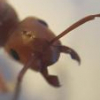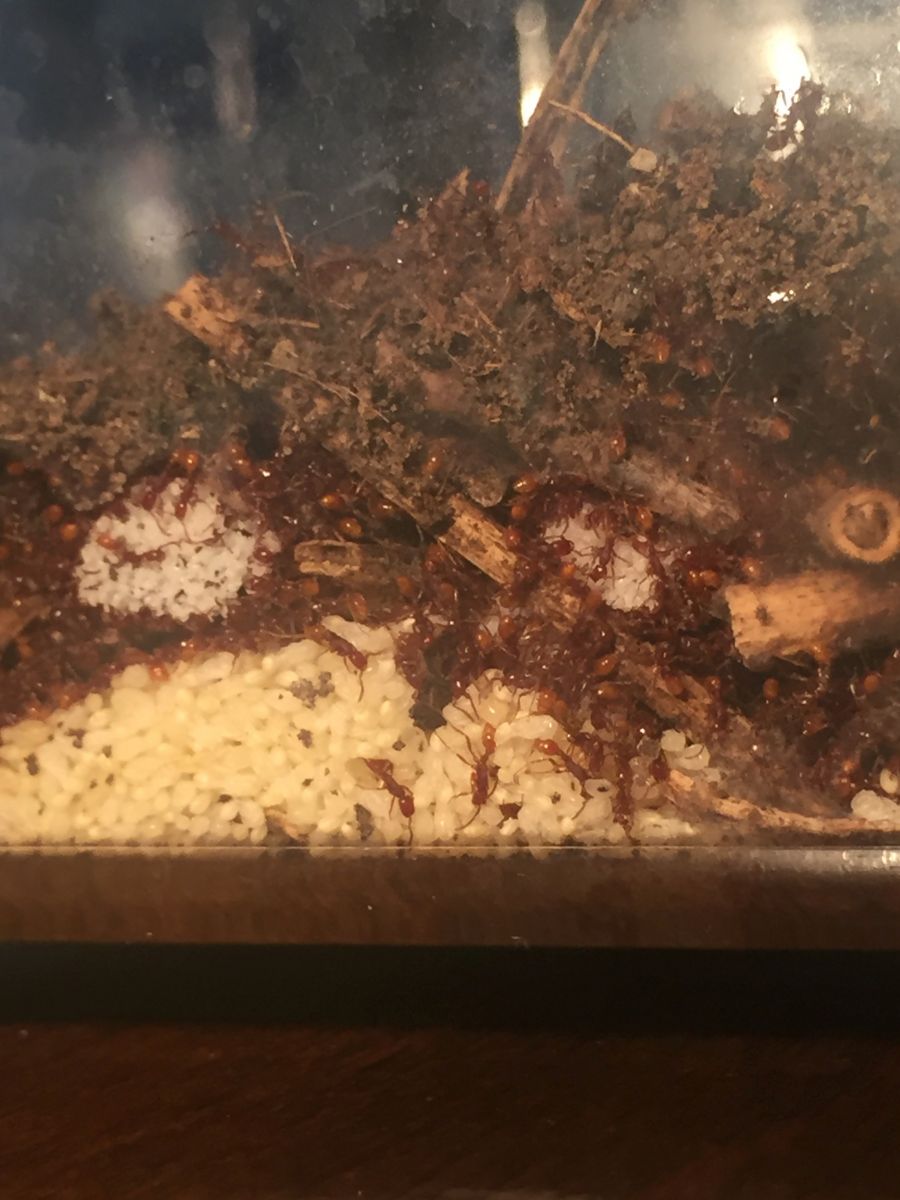Collected 7/26/2018
Location: Walland TN, Border of Smoky Mt. National Park
Colony under log on top of broken pile of kudzu stems.
Current Housing: Small plastic reptile container with layer of soil, detritus and 3 pieces of lengthwise folded pieces of cardboard forming 'roofs'. It has been observed that they are very averse to light. Colony is kept in complete darkness but given light exposure daily to maintain a diurnal cycle, but the ants emerge after sunset, even in closeted situation, thus it may be they have a natural clock and know when to become active at dusk irrespective of having been kept in a darkened enclosure. Temperature setting at 78F.
Food: Have experimented with different insects, they are picky, to be expected as they are specialists for the literature available notes a preference to ant larvae/pupae but the literature does cite their having been observed feeding on non-myrmicine insects. Details of their behavior and biology though is scanty. They readily take commercially grown crickets and small mealworms. They have ignored wild caught crickets, grasshoppers, flies etc. They will only accept crickets and mealworms that have been dismembered, obviously for the meal worm due to its tough exoskeleton. Literature has noted that one of the reasons speculated as to why they are specialists on other ant immatures is due to their high fat content let alone being a protein source. I speculate that one reason they may be accepting of commercially raised crickets as opposed to caught ones is due to difference in diet of the commercially raised ones versus the wild ones and that may be contributing to a 'fatter' content meal, or it could be as simple as they taste different and that is attractive, the upshot is though they do feed on non-myrmicine insects, but is that sustainable for colony health and more importantly as a food source that is nutritionally sufficient for proper larval development? That is also an unknown.
Colony was collected with large number of pupae and currently these have not eclosed. The queen was collected and observed having a highly distended abdomen and mostly immobile due to that extension. Her status is unknown due to the subterranean and reclusive nature they exhibit.
Is this a species that is easily kept, I think not. Is it a 'waste of time', that is a subjective statement. As is obvious to any reader of this there are trial and errors in this endeavor of keeping ants, carpenter ants have sets of needs and requirements that are different from leaf cutters, for many a carpenter ant keeper perhaps the leaf cutters are 'too difficult' or a 'waste of time', again a subjective statement. There are many a reader who has had failure with even species considered generally easy to maintain, there is no difference in this attempt. One sciences the hell out of it and works to maintain the ants health with vigilance and consistent observation and as needed, adjustments. And if necessary, release them ultimately.
Any helpful comments and advice are solicited.
Photos and video to be uploaded.
























